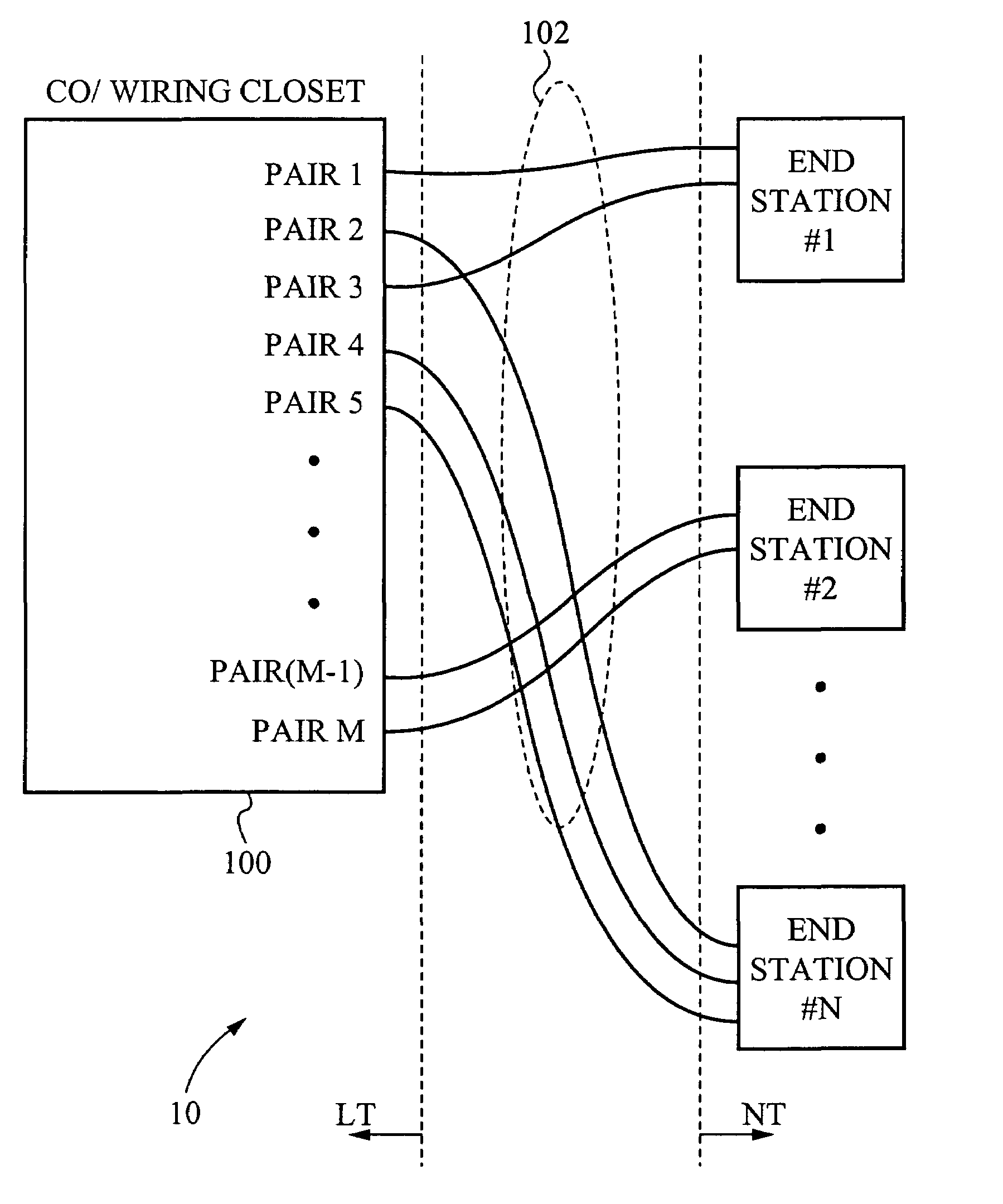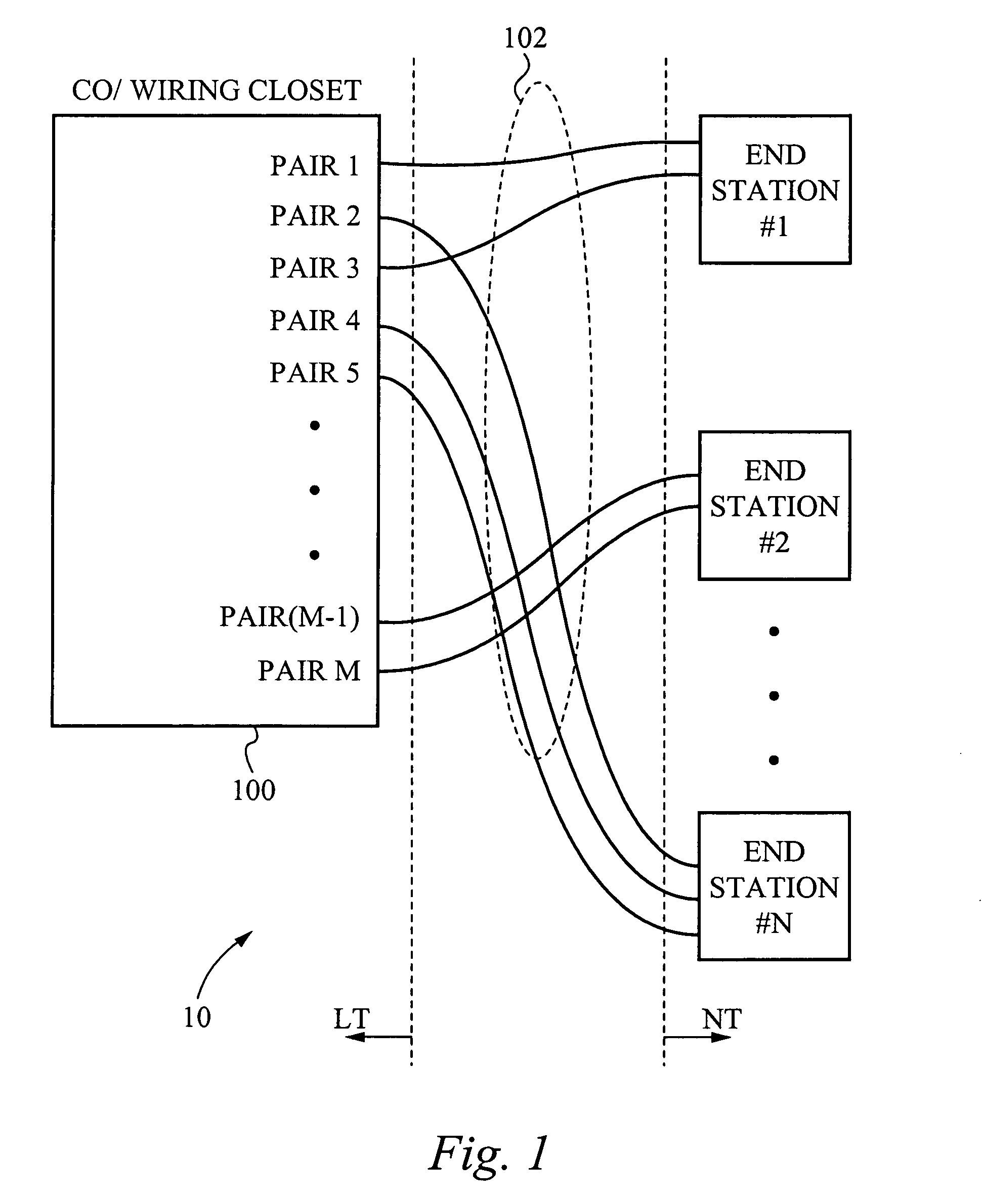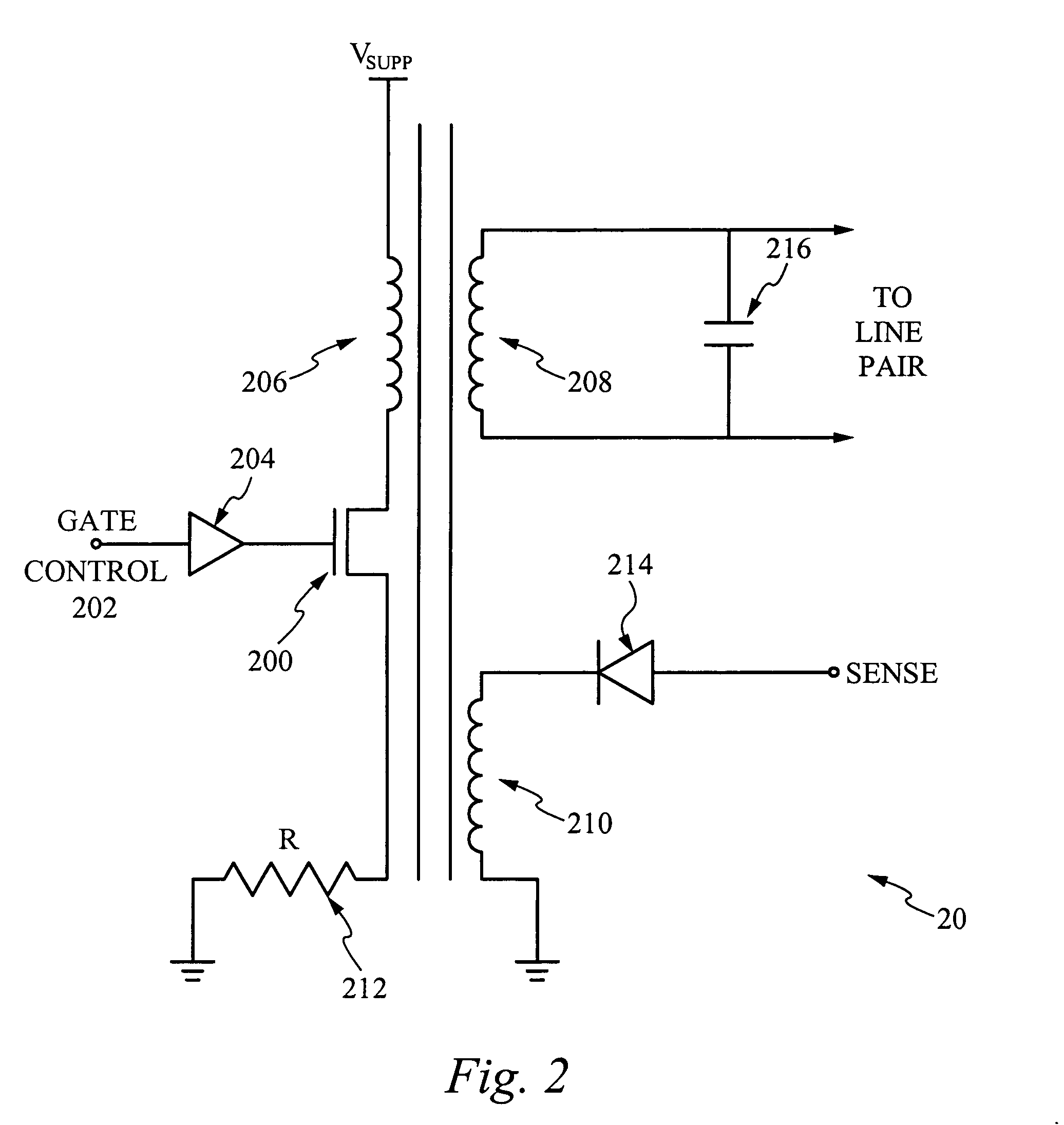Multi-pair aggregate power distribution
a power distribution and aggregate technology, applied in the field of electric power distribution, can solve the problems of not providing an efficient or even feasible means for transmitting power to a remote device, dsl-like devices are not within the scope of the 802.3af standard, and not being able to extend the advantag
- Summary
- Abstract
- Description
- Claims
- Application Information
AI Technical Summary
Benefits of technology
Problems solved by technology
Method used
Image
Examples
Embodiment Construction
[0020]Those of ordinary skill in the art will realize that the following detailed description of the present invention is illustrative only and is not intended to be in any way limiting. Other embodiments of the present invention will readily suggest themselves to such skilled persons having the benefit of this disclosure.
[0021]Embodiments of the present invention are described herein in the context of methods of and apparatuses for using multiple conducting pairs to transmit power to remote electronic devices. While not expressly shown in the drawings, one skilled in the art will understand that the conducting pairs over which power is transmitted to the various remote devices may also be used to for communicating data and voice information to / from the remote devices. Reference will now be made in detail to implementations of the present invention as illustrated in the accompanying drawings. The same reference indicators will be used throughout the drawings and the following detail...
PUM
 Login to View More
Login to View More Abstract
Description
Claims
Application Information
 Login to View More
Login to View More - R&D
- Intellectual Property
- Life Sciences
- Materials
- Tech Scout
- Unparalleled Data Quality
- Higher Quality Content
- 60% Fewer Hallucinations
Browse by: Latest US Patents, China's latest patents, Technical Efficacy Thesaurus, Application Domain, Technology Topic, Popular Technical Reports.
© 2025 PatSnap. All rights reserved.Legal|Privacy policy|Modern Slavery Act Transparency Statement|Sitemap|About US| Contact US: help@patsnap.com



